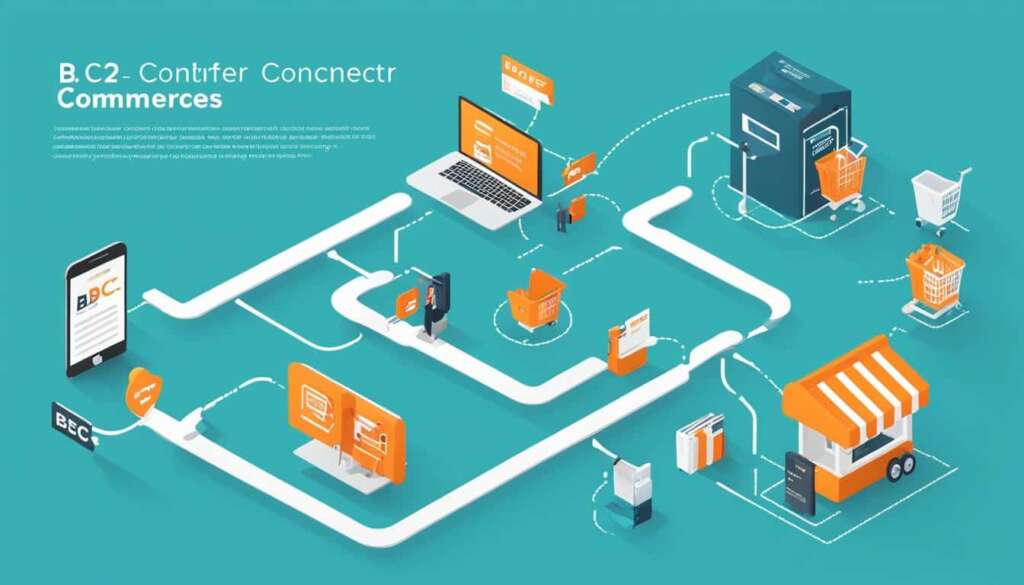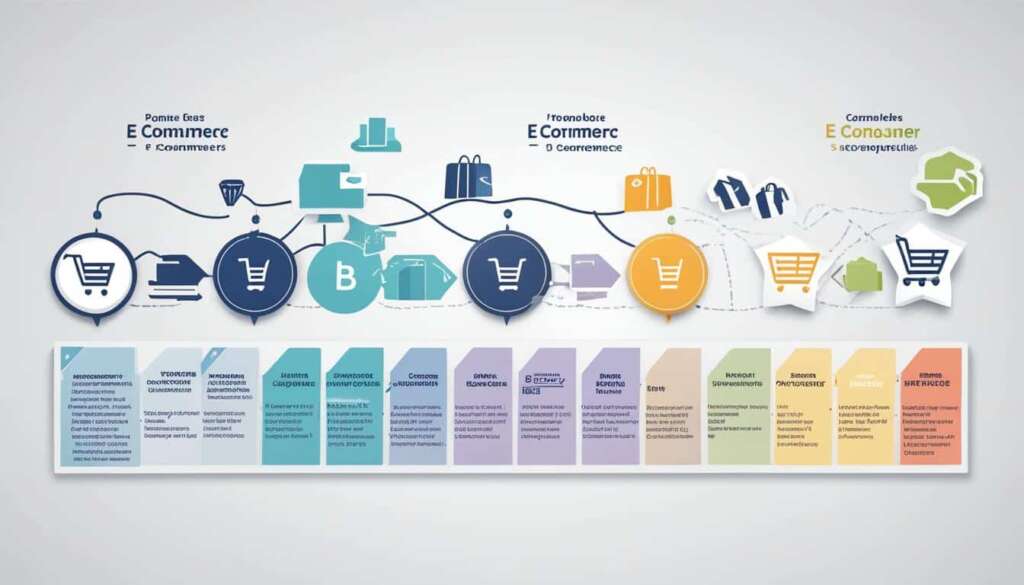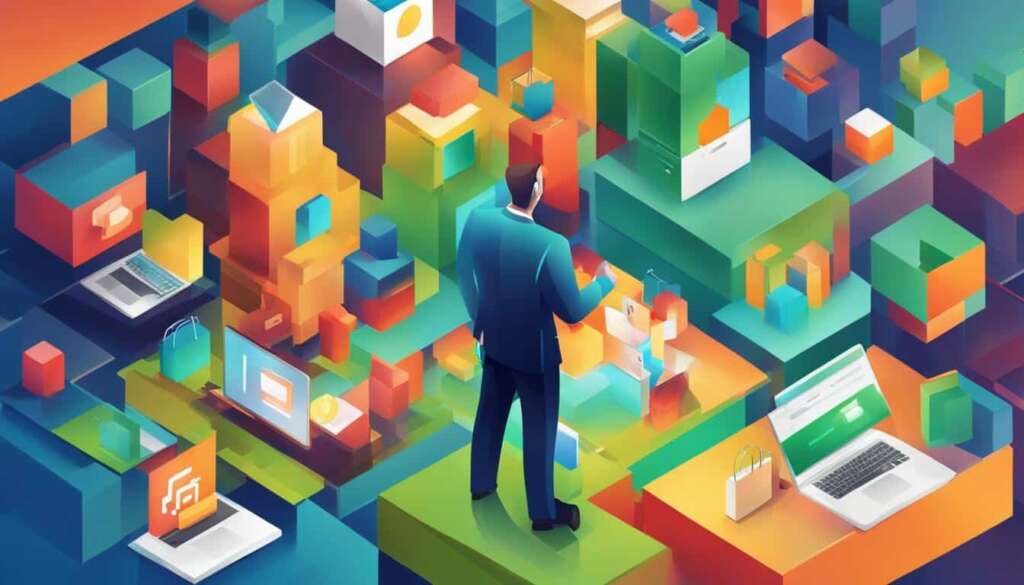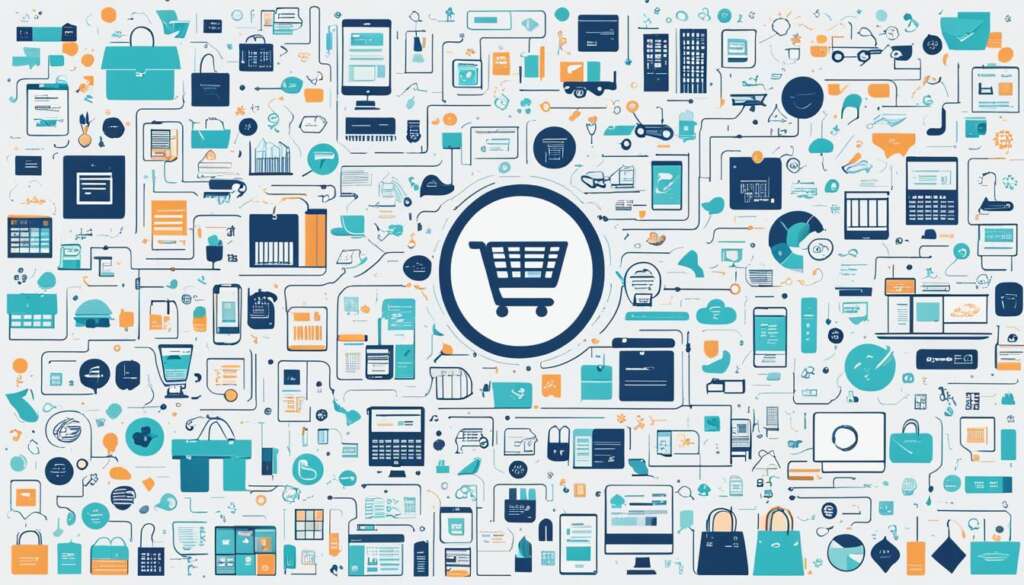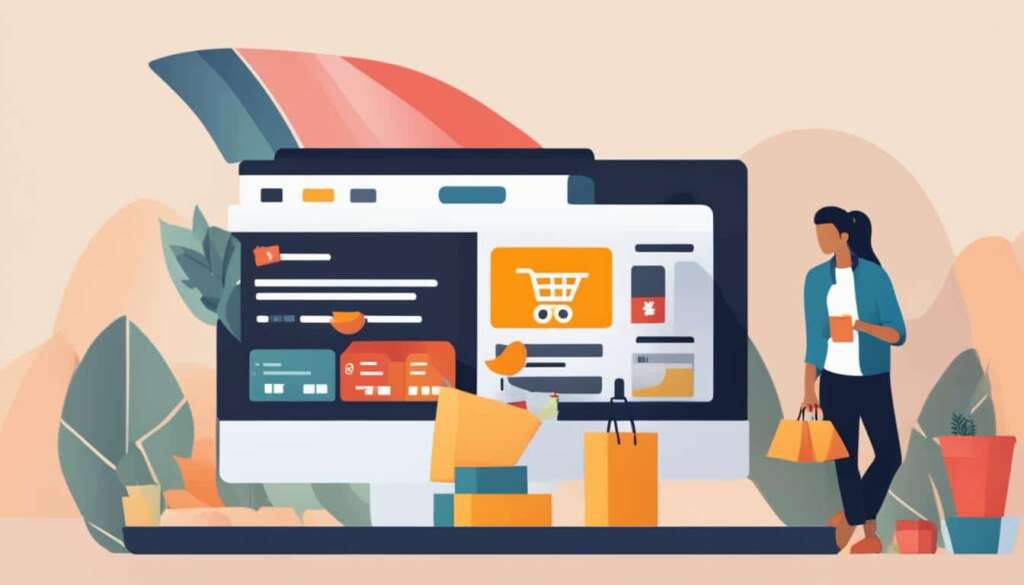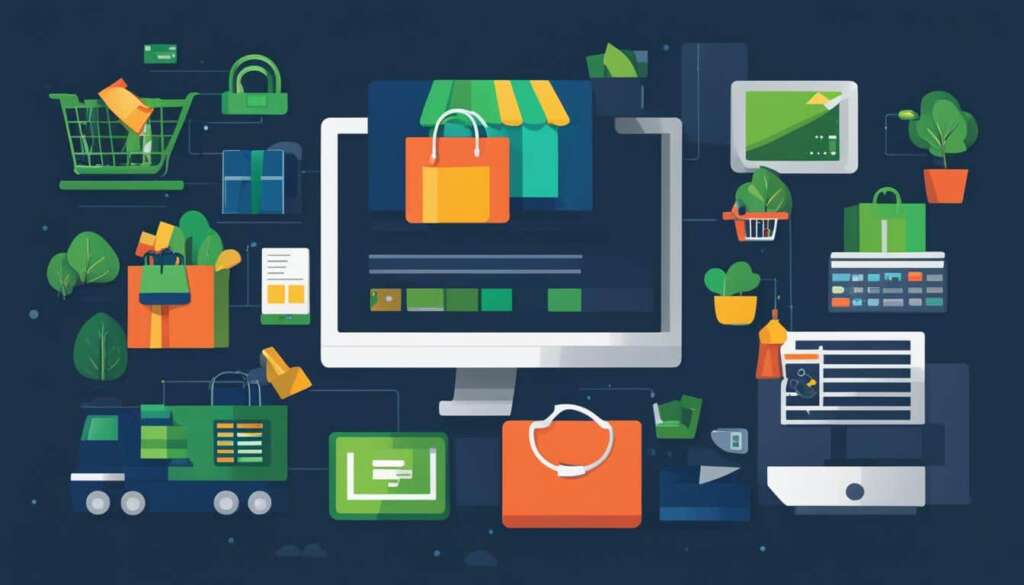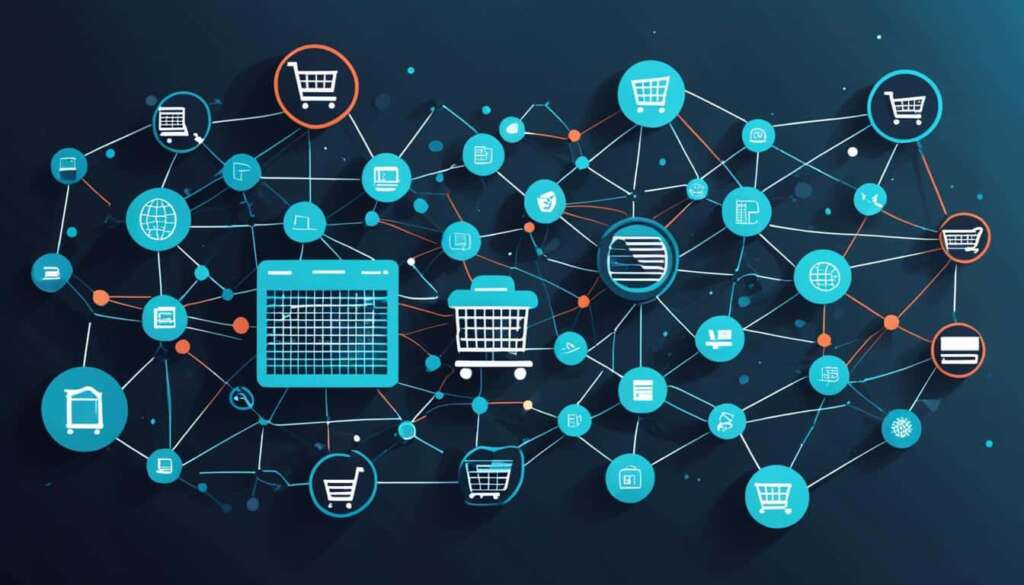Table of Contents
The world of e-commerce is diverse and constantly evolving. There are several key models that shape the online business landscape today. These models include Business-to-Consumer (B2C), Business-to-Business (B2B), Business-to-Government (B2G), Business-to-Business-to-Consumer (B2B2C), Consumer-to-Business (C2B), and Consumer-to-Consumer (C2C). Each model has its own unique features, benefits, and challenges that impact the digital marketplace.
B2C (Business-to-Consumer) E-commerce Model
The B2C model is a key player in the world of e-commerce, where businesses directly sell products and services to consumers. This model revolves around short sales cycles and high transaction volumes, catering to the needs and desires of individual buyers.
One of the primary channels for B2C transactions is the online store, where consumers can browse and purchase a wide range of products conveniently from their homes. These online stores provide a seamless shopping experience, allowing consumers to compare prices, read reviews, and make informed decisions.
The B2C sales cycle is generally shorter compared to B2B transactions. Consumers often make impulsive buying decisions, driven by emotions or specific needs. This means that B2C businesses must adopt strategies tailored to capturing consumers’ attention, inspiring trust, and closing sales quickly.
B2C businesses heavily rely on technology to reach and engage with their target audience. Mobile apps, for example, enable companies to tap into the growing number of consumers who use their smartphones for online shopping. Remarketing is another technique used to keep products and brands top-of-mind by displaying targeted advertisements to consumers who have shown interest in previous interactions.
“The B2C model allows businesses to directly connect with their end-users, offering convenience, personalization, and a seamless shopping experience.”
By focusing on the needs and preferences of consumers, B2C businesses can create tailored marketing campaigns, enhance customer satisfaction, and build long-term relationships. The B2C e-commerce model plays a vital role in shaping the digital marketplace, empowering both businesses and consumers in the online shopping landscape.
B2B (Business-to-Business) E-commerce Model
In the B2B model, businesses sell their products or services to other businesses. This model involves longer sales cycles and higher transaction values compared to B2C. B2B transactions often include recurring purchases, and the buyers may resell the products to the end-consumers. B2B businesses have been adopting e-commerce solutions to cater to the changing demands of tech-savvy buyers. The digital commerce initiatives in the B2B sector are expected to surpass B2C in the coming years.
The B2B e-commerce model focuses on providing products and services tailored to the specific needs of business customers. Unlike in B2C transactions, where the target customers are consumers, B2B transactions occur between companies.
The B2B sales cycle is typically longer and more complex than the B2C sales cycle. Due to the higher transaction values involved in B2B transactions, decision-making processes tend to be more thorough and involve multiple stakeholders. B2B buyers often require detailed information, product demos, and negotiations before finalizing a purchase.
B2B purchases often involve recurring orders, as businesses require a steady supply of products or services to support their operations. For example, a manufacturing company may need to purchase raw materials regularly, while a marketing agency may require recurring software subscriptions.
B2B businesses play a crucial role in the supply chain, as they provide the goods and services that enable other businesses to function and serve their own customers. This interdependency makes B2B transactions an essential part of the overall economy.
The B2B model is characterized by building long-term relationships with business customers, understanding their unique needs, and providing tailored solutions that help drive their success.
B2B e-commerce platforms have seen significant growth in recent years as businesses increasingly embrace digital transformation. These platforms offer features and functionalities that cater specifically to the requirements of B2B transactions, such as bulk ordering, contract pricing, and integration with enterprise resource planning (ERP) systems.
The future of B2B e-commerce looks promising, with research indicating that B2B online sales are expected to exceed B2C online sales. As more businesses recognize the convenience and efficiency of online purchasing, the B2B e-commerce sector is poised for continued growth and innovation.
B2B2C (Business-to-Business-to-Consumer) E-commerce Model
The B2B2C model is a strategic partnership between two businesses to sell products or services directly to end customers. Unlike white labeling, where a company rebrands the product as its own, B2B2C maintains the branding of the original company. This model allows businesses to expand their customer base by leveraging partnerships and collaborations.
By forming alliances with complementary businesses, companies can tap into new markets and reach a wider audience. The B2B2C model enables businesses to capitalize on the partner’s expertise, resources, and customer base, while maintaining control over their brand identity and customer experience.
Through this collaborative approach, businesses can provide customers with a more holistic solution that meets their specific needs. The partnership allows for seamless integration of products or services, creating a unique value proposition for end customers.
“The B2B2C model enables businesses to access a ready-made audience and increase their market reach without significant costs or efforts.” – [Industry Expert]
This model is particularly effective in industries where there is a clear synergy between the partnering companies. For example, a software company may collaborate with a hardware manufacturer to offer a complete solution to end customers. By bundling their products and services, the companies can provide a seamless experience to customers and generate additional revenue streams.
Furthermore, the B2B2C model allows businesses to establish direct relationships with end customers, gaining valuable insights and feedback. This customer-centric approach enables businesses to tailor their offerings to better meet customer expectations and preferences.
Overall, the B2B2C model serves as a win-win-win situation for all parties involved. The partnering businesses can leverage each other’s strengths and resources, end customers benefit from a consolidated solution, and the original company expands its market reach and acquires new customers.
Benefits of the B2B2C model include:
- Expanded customer base through strategic partnerships
- Access to partner’s expertise, resources, and customer base
- Enhanced brand identity and customer experience
- Increased market reach without significant costs or efforts
- Opportunity to create unique value propositions for end customers

By harnessing the power of partnerships and collaborations, businesses can unlock the full potential of the B2B2C model and drive sustainable growth in the digital marketplace.
C2B (Consumer-to-Business) and C2C (Consumer-to-Consumer) E-commerce Models
The C2B model has emerged as a powerful force in the e-commerce world, enabling consumers to sell their goods and services directly to businesses. With the increasing popularity of freelancing platforms and influencer marketing, individuals now have the opportunity to offer their skills and expertise directly to companies. By leveraging their unique talents, consumers can tap into a vast market of businesses seeking their services.
On the other hand, the C2C model focuses on consumers engaging in direct transactions with each other, without the involvement of businesses. This model thrives on the concept of online marketplaces, where individuals can buy and sell products or services. Platforms like eBay and Craigslist have revolutionized the way consumers interact, providing a convenient and efficient channel to connect buyers and sellers, bringing the C2C e-commerce model to life.
Consumer selling has become a significant trend, driven by the convenience and accessibility of online marketplaces. By embracing the C2B and C2C models, consumers are empowered to monetize their skills and possessions, creating new opportunities for income generation in the digital landscape. As e-commerce continues to evolve, businesses and consumers alike are realizing the immense potential of these models, fostering a dynamic and thriving online marketplace.
FAQ
What are the different models of e-commerce?
The different models of e-commerce include Business-to-Consumer (B2C), Business-to-Business (B2B), Business-to-Government (B2G), Business-to-Business-to-Consumer (B2B2C), Consumer-to-Business (C2B), and Consumer-to-Consumer (C2C).
What is the B2C e-commerce model?
The B2C e-commerce model involves businesses selling products and services directly to end-users, the consumers. These businesses operate online stores where consumers can make purchases.
What is the B2B e-commerce model?
The B2B e-commerce model involves businesses selling products or services to other businesses. This model usually has longer sales cycles and higher transaction values compared to B2C.
What is the B2B2C e-commerce model?
The B2B2C e-commerce model involves a company partnering with another organization to sell products or services to end customers. This model allows businesses to reach a wider customer base through collaborations.
What is the C2B e-commerce model?
The C2B e-commerce model involves consumers selling goods and services to businesses. This model has gained popularity with the rise of freelancing platforms and influencer marketing.
What is the C2C e-commerce model?
The C2C e-commerce model focuses on consumers selling goods or services directly to other consumers. Online marketplaces such as eBay and Craigslist facilitate these transactions.

